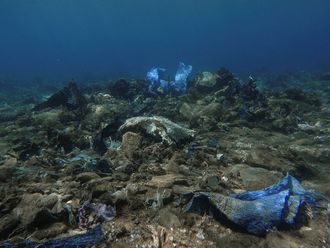WASHINGTON: Federal government laboratories in Atlanta improperly sent potentially deadly pathogens, including anthrax, botulism bacteria and a virulent bird flu virus, to other laboratories in five separate incidents over the past decade, officials said on Friday.
The incidents, which raise troubling questions about the government’s ability to safely store and transport dangerous microbes, prompted the Centres for Disease Control and Prevention (CDC) to halt operations at its bioterrorism rapid response lab and an influenza lab and impose a moratorium on any biological material leaving numerous other CDC labs.
“These events should never have happened,” CDC Director Thomas Frieden said on Friday in a conference call with reporters. The American people “may be wondering whether we’re doing what we need to do to keep them safe and to keep our workers safe,” he said. “I’m disappointed, and frankly I’m angry about it.”
No one has become infected or fallen ill in those incidents and all the organisms were safely disposed of, Frieden said.
The CDC disclosed the incidents in a report Friday detailing safety lapses that occurred last month, when as many as 84 workers may have been exposed to live anthrax after employees unknowingly sent live samples of the bacteria from one CDC lab to other CDC labs.
As part of that internal investigation, the agency found that “this is not the first time an event of this nature has occurred,” the report said. “At the time of this writing, CDC is aware of four other such incidents in the past decade.”
Frieden only found out about one of the incidents on Wednesday. A sample of flu virus contaminated with the deadly H5N1 influenza virus was inappropriately sent in March from a CDC lab in Atlanta to a US Department of Agriculture (USDA) laboratory in Athens, Georgia. CDC staff became aware of the contamination about six weeks ago but apparently never reported it to agency leaders. “I learnt about it less than 48 hours ago,” Frieden said, calling it “an unacceptable delay.”
Frieden said he has established a high-level working group to review and approve safety on a lab-by-lab basis. He also appointed a top official to be the single point of accountability. CDC operates some of the world’s most advanced and most secure laboratories for handling infectious germs.
Michael Osterholm, a bioterrorism expert and director of the Centre for Infectious Diseases Research and Policy at the University of Minnesota, said all the mishaps are troubling, but he singled out the one involving H5N1, the much-feared bird flu strain that has infected 650 people worldwide since 2003, killing more than half of them.
“Somehow, you had this potentially lethal virus cross-contaminating what should have been a relatively safe virus,” Osterholm said. “When you can have that type of contamination occur, then have the specimen sent out for others to handle, not knowing what’s in it, that’s a really significant issue.”
The release of the CDC report comes days after government officials discovered decades-old vials of smallpox in a building on the Bethesda, Maryland, campus of the National Institutes of Health (NIH). The vials were flown to the CDC on Monday, and Frieden said Friday that two of the six vials labelled as smallpox have shown growth in tissue cultures, meaning the samples are viable, or alive. It could take as long as two weeks to determine whether the remaining samples also are viable. In the meantime, researchers at CDC will sequence the genetic make-up of the smallpox before ultimately destroying the samples in the presence of officials from the World Health Organisation.
“That’s what should have been done decades ago, and that’s what will be done now,” Frieden said.
He said the vials included a date — Feb. 10, 1954 — which came after smallpox had disappeared from the United States but decades before it had been eradicated worldwide.
“Whoever created these vials didn’t do so out of malice,” Frieden said.
It remains unclear how the smallpox samples ended up in a lab that the Food and Drug Administration (FDA) had operated on the NIH campus since 1972. On July 1, a scientist preparing for the lab’s move to the main FDA campus in White Oak, Maryland, found the smallpox samples in a third-floor cold storage room kept at about 40 degrees Fahrenheit.












